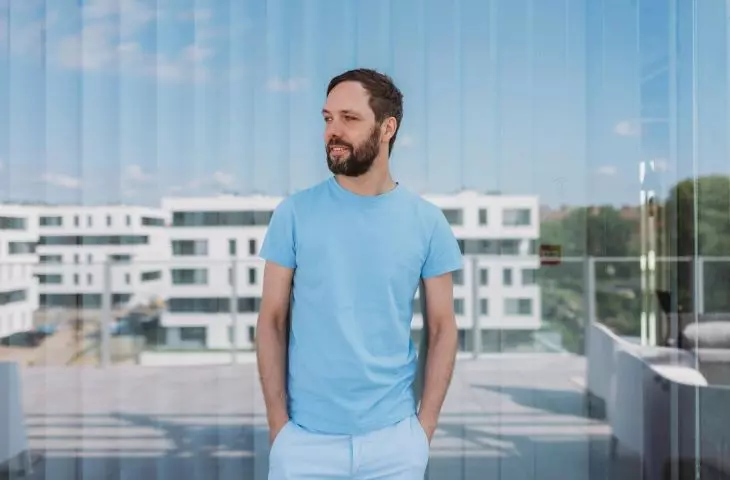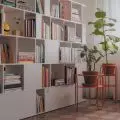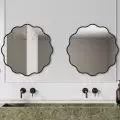In recent months, local SARP branches held elections for new authorities for the 2024–2028 term [RESULTS]. We take a closer look at the plans of the newly elected presidents of the Society of Polish Architects, and we ask those who were re-elected to summarize the past years. We also ask them why it's worth belonging to SARP and about contemporary challenges facing architects. Today, Karol Nieradka, president of the SARP Szczecin Branch, answered our questions.
SARP Szczecin Branch
Ola Kloc: How would you summarize the past term?
Karol Nieradka: I won't write that it was a difficult term, that there was a pandemic and war in Ukraine. For me, it was the first term of office and an exceptionally long one, as it was extended to almost 5 years by the pandemic. I was learning the function of the President, sorting out the backlog and current affairs. As a result of the political decisions of 2019, trust in SARP and cooperation with the local government deteriorated greatly. Therefore, we set as our main goal to restore good cooperation with the City and expand our activities to smaller municipalities, TBS and universities. We managed to sign letters of intent with the Academy of Arts and the West Pomeranian University of Technology. We held a total of nine competitions, including in Trzebiatow, Swidwin and Stargard. The largest of these were a teaching center for the Pomeranian Medical University and the new Faculty of Computer Science at ZUT in Szczecin.
As part of the Zalew Architektury series, curated by Piotr Śmierzewski, we organized 22 meetings with prominent artists from all over Poland. Live streamed lectures by Przemo Łukasik (MEDUSA GROUP), Marta Sękulska-Wrońska (WXCA), Wojtek Kotecki (BBGK), Natalia Paszkowska (WWAA) and many others gathered dozens of viewers each month at the SARP Gallery at Mariacka Street, and individual Facebook accounts were viewed by several thousand people (each!).
We organized two consecutive Westivals. Next to the Cracow Architecture Biennale and the Wroclaw DoFA, this is the most important event dedicated to architecture in Poland. In 2024, the 15th edition of Westivale was already held. In 2022, for three days we hosted the most interesting young architects from Poland. Young means thirty years old. Presentations, exhibitions and projects prepared by 11 young architects and teams graced the 14th edition. The highlight of the festival was the announcement of the results of the realization competition for the Museum of the Uprising Deed in Gora Swietej Anny, in which the invited teams took part. The winner was the P2PA team, and honorable mention went to the team of Zygmunt Borawski, Iwo Borkowicz, Aleksander Wadas. All of them were our guests. Thus, Westival 2022 "The Future of Polish Architecture..." had a real impact on the space of the Polish landscape. The next edition from 2024, in turn, was three days of meetings and debates about the city with the most prominent specialists in their fields. We talked about post-war identity, the condition of housing, revitalization, communication and the role of the Architect of the City. All the debates were broadcast live from the new headquarters of the Polish Theater by local media, and the individual discussions have reached hundreds of viewers and thousands of impressions to this day.
All the while, SARP Board members published and spoke publicly on issues important to the city. There were more than a dozen articles, interviews, statements and official letters addressed to the city authorities and its residents. In them we sought the restoration of the function of the Architect of the City, the strengthening of the role of MKUA, the organization of competitions for the most important public investments, and warned against wrong decisions. During the pandemic period, we sadly said goodbye to eight of our members, including two former Presidents, the tragically deceased City Architect Jarek Bondar and the long-time secretary of our branch.
Ola Kloc: What program of activities of the SARP branch do you assume for the near future? Are there any changes planned?
Karol Nieradka: I see my vision of the Association as a professionalized group of experts and designers recognized in the community. It doesn't matter whether there will be 100 or 200 of us in the Association. It is important that our most prominent colleagues understand and appreciate the activities and presence in SARP. Several award-winning and acclaimed architects and several young architects have joined the SARP Board of Directors and College of Competition Judges. The refreshed Board, which also included a municipal councilwoman, began talks with the new authorities after the local elections. Although the mayor in Szczecin has not changed, there have been personnel changes in the city's authorities and a new division of responsibilities among vice-mayors. Now we see in the city a chance for a new opening and a willingness to return to talks with the professional architectural community, of which SARP is an active participant. We are after talks with all three deputy mayors, whose competencies overlap with SARP activities. A new composition of the MKUA has been selected, using, among other things, the recommendations of our branch and the West Pomeranian District Chamber of Architects. After 3 years since the death of Jarek Bondar, there was finally a chance to restore this position in the City Hall. Active participation in the City's plans, restoration of trust, including the competition for City Architect, lobbying for quality procedures in city investments, serious debate on the development of the city, especially in the area of new investment areas along the Oder River — these are the most important goals of the new term. In addition, continuing cyclical events and soliciting competitions in smaller local government centers. Over the past few years we have also managed to renovate the facade of our Gallery. In this term, we plan to renovate the interior for the SARP library being created by the branch.
Ola Kloc: What are the biggest challenges facing architects today?
Karol Nieradka: Professionally, of course, we face the multidisciplinarity of our profession and its constant change. Laws are changing, technologies are changing, BIM is entering, certification, environmental conditions, local and global climate, and we are facing a revolution related to artificial intelligence. However, what we are struggling with as a community, in my opinion, is the restoration of the trust and prestige of the architectural profession. Because of the low salaries in our industry, we have lost prestige. The public and the authorities, fed by images of rich influencers with simple answers to difficult questions, have stopped listening to the difficult answers of professionals. Today, every celebrity, influencer and activist wants and "knows" how to design a city. The average Pole thinks that an architect is the man who has to sign off on a type design to get a building permit. The average politician thinks he's the subcontractor to the general contractor selected in the "design and build" procedure. Rebuilding the prestige of the profession is, in my opinion, architects' biggest challenge.
Ola Kloc: How many members are there in the branch and how much are the dues?
Karol Nieradka: The branch has about 150 members. The membership fee is PLN 20 per month.
Ola Kloc: What does SARP give to architects today? Why is it worth being a member of the Association?
Karol Nieradka: This question was once answered extensively by the editor-in-chief of ARCH, Agnieszka Bulanda. I attach her letter below. When I signed up for SARP, I never expected it to "give" me anything. I became a member at the urging of the previous president, Marek Orłowski, whom I met many years ago on the stern of a ferry to Copenhagen. We talked about competitions and architecture. A few weeks later, elections were held in the Szczecin branch. Marek then became President for two terms, and I managed to get on the Board. Since then I have learned a lot. I had the privilege to meet the best architects from all over Poland. To participate in the organization and judging of architectural competitions. To learn and understand local politics. To understand the city and the processes that govern it. I invited many talented colleagues to SARP. Winners of competitions, and today also competition judges and Board members. Recently a friend of mine, and a great architect, told me that after many years of observing SARP in Wroclaw, he volunteered to join the Board, "because a real architect has to do competitions, and to win them, you have to learn how to judge". Indeed, competitions are the domain of SARP, and judging a competition together with Maciej Miłobędzki of JEMS is an experience I owe to SARP. I believe that this is how "recruitment" to SARP should look like. This is how we build the prestige of the profession and the Association.
Why SARP?
Many SARP members and those outside the Association wonder what SARP can give them. This question is always present in any relationship with others, when we take stock of what we gain in our interactions and what we lose by helping others. Here are a couple of answers to why it is worth belonging to this organization.
First, because as one community we want to be together.
The organization of architects has existed in Poland for more than 130 years. All the architects who count in Poland are members of this organization and we can meet them there. These meetings are important because they take place on a collegial level. One can talk and argue, and this gives a good platform for exchanging ideas, knowing one's work and oneself. There is no other organization in Poland where young, middle and old talk freely with each other about architecture.
Secondly, because we believe that architecture is important.
We all want architecture to be present in the media, exhibitions and literature. The actions of each of us individually, do not produce results. We must all support them in order to be heard. SARP's democratic structure causes us to present different views. SARP boards and presidents are supposed to present them, not formulate them. This causes an apparent contradiction; metropolitan, provincial, women, teachers may have different views on the matter, but they are all about the same thing. About the important position of architecture in Poland. Therefore, controversy and contradictions in our views are meant to strengthen us, not weaken us.
Third, because we support individual ideas and seek the support of others for them.
SARP is undergoing strong evolution and is constantly looking for new areas of its activity. It is open to fresh ideas from younger generations and new people. Anyone who has an idea can submit it and get support from others. If we are designers, we are designing the future, and we must appeal to those who understand that future. This is a unique opportunity for people with initiative to take advantage of the offer of an existing organization that is willing to support them.
Fourth, because we want dialogue with others.
SARP holds many competitions every year. Open, as far as possible, to everyone and not limited to Association members. Wherever possible, we fight to remove territorial restrictions, limitations on credentials or experience. Competitions are a field for the exchange of information, and the post-competition discussion should be as creative as the work itself. If we want to organize contests, let's not limit ourselves to just participating in them, but try to initiate, conduct and resolve them well. Competitions do not arise from nothing, but from the initiative of our colleagues and from the Association's pressure on investors and institutions to organize them. Only widespread acceptance and the need and the way of doing things and the support of all colleagues can lead to the success of such an idea.
Fifth, because SARP is an ennoblement and prestige.
To receive this honor, you need the recommendation of distinguished colleagues in the profession. As Prof. Gurawski once said:
working in SARP is an absolute honor and a sense of bonding and approval from colleagues [...] and all this is done to take care of good architecture, space, promote talent, regardless of age, gender, affiliation and ensure a decent life in a free profession.
Membership in SARP is voluntary. Only practicing architecture is associated with the obligation to belong to the Chamber of Architects. But passion for architecture is much more than practicing a profession.
Here are five reasons why you should be with us.
What does SARP give ?
Without going into the serious text of all the basic documents of SARP (Statutes, Bylaws, etc.) briefly a few words of explanation for the uninitiated, what SARP does, (not: gives):
- SARP represents the architectural community externally. This includes contact with, for example, state authorities, city and district governments, etc.
- It consults on behalf of architects on all legislative changes — e.g., the Construction Law, the Historic Preservation Act, the Land Development Act, etc. This is a tedious and thankless job — keeping in mind that we are not lawyers and often the text itself is difficult to wade through.
- Helping members in conflicts with investors, authorities, etc. — often acting on their behalf — sometimes even in the courts.
- Protects, and often fights for, so-called cultural legacy, i.e., buildings of great value built after the war, but which are not monuments.
- Protects members' copyrights.
- It organizes or co-organizes architectural and urban planning competitions, including by co-authoring or reviewing competition regulations.
- Tries to help and defend the winners of competitions against the "temptations" of some investors and/or Authorities.
- Speaks in discussions in the press, TV, radio, etc. Also in the broader field of the Internet.
- Supports all "grassroots" initiatives of people and organizations related to architecture.
- Collects dues, which are earmarked for its own needs, for charitable assistance to SARP members (age, poverty, illness — probably need no explanation).
- It awards prizes for the best completed buildings in an annual competition, and once a year the association's greatest honor, the SARP Honorary Award for Lifetime Achievement in Architecture.
- It publishes its own professional magazine, ARCH, which is the Association's showcase and to which every SARP member can contribute.
This is an incomplete list that defines SARP's activities.
And the most important is — acting TOGETHER, where the good of architecture and all those practicing this beautiful but difficult profession is important.














